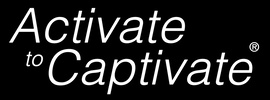|
In presentations, conferences, and meetings, people often don’t have enough time to cover all the content they want to share. That’s why we often hear phrases like:
“I’ll go through this quickly…” “To give you a ‘brief’ overview…” “I just have a quick question to ask…” However, even though these types of sentences are common, it’s important to understand the effect they actually have on an audience. “I’ll go through this quickly…” When someone says they will do something “quickly” it usually means the presenter will be speaking at a rapid pace. In order to keep up, the audience will have to put in more effort to track the details. Usually, this is when the audience decides to tune out. It’s more productive to simply omit that phrase and then share the corresponding content. “To give you a ‘brief’ overview…” Telling people something will be “brief” draws an audience’s attention to the time the content is taking, rather than the details of the content. This can invite critique because the audience starts to analyze whether the summary was succinct or if it dragged on too long. Eliminating that word is more direct and helps your message stand out. “I just have a quick question to ask…” When you’re already running low on time, saying something will be “quick” actually has the opposite effect. You don’t want to spend precious time adding in extra phrases when it would be better to spend that time on the discussion. That’s why I recommend avoiding that phrase and simply asking the question. This creates a smoother narrative which is a better use of everyone’s schedule. While it’s common to comment on how “quick” something will be, it’s not always effective. Instead, omit those phrases and simply share the content. This can help your audience connect with the information which will be a more effective use of everyone’s time. Author: Bri McWhorter Meetings take up a lot of time. Therefore, it’s important to make them as effective as possible. To prepare, folks spend time crafting agendas, putting together slide decks, and coming up with discussion points. People have to be intentional in order to maximize each meeting’s potential. However, there is one moment in a meeting that often gets overlooked — the end.
People usually conclude their meetings by saying: Well, it looks like we are out of time. I know that was a lot of information. So ya… guess that’s it. Then, that phrase becomes the last thing people hear and the message they replay in their head. A team shouldn’t be thinking about how that was “a lot of information” or how everyone ran “out of time”. Instead, it’s important to think about how to make that last moment count. For example a meeting could end with: I appreciate your time and I look forward to checking in next week. I’m excited to hear about the project updates on our next call. Thank you all for all the work you do. The end of a conversation matters. So before a call ends or folks walk out of a conference room, be intentional about the last phrase people hear. Author: Bri McWhorter Asking questions during a presentation can be a great way to engage your audience. It helps the speaker connect with the room and allows the audience to guide the narrative around topics they’d like to explore more. However, it’s becoming increasingly popular for speakers to ask rhetorical questions during presentations. Rhetorical questions, or questions where the speaker doesn’t actually need an answer from their audience, can undermine the power of a presentation for a number of reasons.
1. Disrupts flow Instead of making statements that connect to form a cohesive story, rhetorical questions disrupt the flow of a presentation. For example when a speaker says: So why did we do this? Well, we did this because… What is the new product? The new product is… Rhetorical questions create a choppy tone throughout a presentation. This stop/start pattern can also make it harder for the audience to follow along, since we tend to remember narratives that connect and flow together. Therefore, it’s better to avoid questions and make statements instead. For example… We did this because… The new product is… Making statements is a stronger way to connect ideas in a presentation. 2. Gives your audience permission to stay silent Rhetorical questions don’t require answers. Thus, when a speaker asks a lot of them, the audience gets accustomed to not answering or sharing a response. Then, when a speaker asks a question where they do want to elicit a response, the audience might not engage because they have fallen into a passive pattern and stay silent. 3. Questions can add in a hesitant tone When a speaker asks too many rhetorical questions, it can affect how solid their idea sounds. If an audience is going to trust that a new project or idea was well thought through, it’s better to make statements about how everything came together. Then, if someone does have a question it stands out as an avenue to explore. Having too many rhetorical questions can create a doubtful undertone throughout a presentation. Rhetorical questions can disrupt flow, make your audience disengage, and can add hesitation to your content. Instead, I recommend only asking questions when the audience can actually respond. By asking active questions, speakers show they value engagement by opening up a meaningful dialogue with their audience. Author: Bri McWhorter One of the most common small talk questions is, “What do you do?” People ask this question because it’s a quick and concise way to ask people how they spend the majority of their time. But often, this question doesn’t allow people to open up and connect.
Folks might answer: I’m a grad student at X university. I’m an attorney. I’m a Developer at X corporation. Some people will share a little about the type of work they do, but people are often quite succinct and don’t elaborate. This makes it hard to find an organic way to continue the conversation. That’s why I recommend following up by asking people about what aspects of their jobs (or their fields) that they appreciate. For example you could ask: What’s something you enjoy about your work at the moment? Are you noticing anything changing in your field right now? What is one of the best parts of your job? What is something about your current role that you find interesting? What’s something you look forward to when you work with your colleagues? We can always find ways to bond over stress and discomfort, but when you are meeting someone new, it’s good to connect over things that energize or intrigue you. If your goal is to get people to open up, think about also asking them to share things that inspire and motivate them. Author: Bri McWhorter We are used to instant gratification. We click a button and an article appears, we ask our phone a question and immediately get a response, and we can order an item and expect it to arrive the next day. We don’t live in a world where we patiently wait. Therefore, it’s difficult in presentations when people use phrases that tell an audience what they won’t be getting right now.
For example, people will use phrases such as: I’ll go over that more later… I won’t go into the technical details right now… We don’t have a lot of time so I won’t go over the specifics… I’ll explain that more in a few slides… I’ll describe that in a bit… These phrases are meant to help alleviate questions about more details, but what they really do is distract your audience from what you’re currently explaining. They start to think about what you aren’t sharing right now and it ends up disrupting the narrative. The audience won’t know that you aren’t sharing all the details unless you tell them. So if an audience is listening to you — right now — you want to provide them with the information at that exact moment. If you aren’t going to talk about something for a while, just wait until you get to the point to bring it up. Don’t alert the audience to what they aren’t getting. Instead, just share the information you want and then you can go into more details when you get to that section. This way, your narrative keeps flowing and people can follow your message as you reveal it. Author: Bri McWhorter There are many types of people in a group. Some people are more talkative or extroverted and some are quieter or more introverted. In these situations, it’s easy for the talkative people to dominate the conversation. However, even though quieter people aren’t pulling as much focus, they are still paying attention. Yet, it can often be tough for introverts to establish themselves in a group when they aren’t sharing their voice as much.
That’s why I’ve put together a few phrases that quieter folks can use to remind people that even though they aren’t as talkative, they are still actively engaged in the conversation. Phrases to use: “I’ve been listening to everyone’s initial thoughts about this and I believe…” “What you said made me think about __________. So I’ve been strategizing the best way to approach this…” “When you brought up _______ a little while ago, I started brainstorming about options…” What all of these phrases have in common is that they start by letting people know what’s happening while you’re not speaking. They’re reminding people that even though you are not talking, you are still playing an active role. That reminder is important because many people get silent when they are tuning out. Therefore, teammates might mistakenly assume that if you’re quiet, you’re not actively involved. These phrases stop that false premise and correct the narrative. Then, during future meetings, people won’t assume you have checked out if you’re quiet. Instead, they’ll know that you’re analyzing the situation, and will be more likely to check in with you. Letting people know what’s happening behind the scenes is a great way to stop incorrect assumptions and take control again. That way, even when you aren’t talking out loud, people know that you are still actively part of the conversation. Author: Bri McWhorter Every presentation is a conversation. Even though the audience isn’t speaking, they are still responding to the speaker’s content. There is a back-and-forth between the two parties. However, the more a talk sounds like a “presentation”, the easier it becomes for the audience to tune out. There is a subconscious distancing that can occur which makes it more difficult for the speaker to effectively communicate their message. That’s why I advise avoiding sentences that bring attention to the presentation such as:
1. In this presentation I’ll be talking about… You wouldn’t start talking to a colleague by opening with, “In this conversation I’ll be sharing…” so I wouldn’t open a talk by saying, “In this presentation I’ll be talking about…”. Instead, just share the information without that formal set up. Think of how you’d start talking about this topic in a conversation and open that way instead. 2. I’ll go into that more in a few slides… When people use this phrase, it minimizes the importance of the slide you’re actively sharing. The audience starts to think about what slides will be shown in the future, when that information will come up, and what that info will be. The audience’s attention jumps into the future and they might miss the details you’re currently talking about. If you share the information as you get to it, the audience is always paying attention to what is currently in front of them. 3. This slide shows you… In conversations, images are used to reinforce ideas. They are helpful because pictures add context and specificity to a story. However, you wouldn’t share a photo and say, “This photo shows you…”. Instead, you’d share a bit of background and then show the image to add in more depth to your point. By eliminating that phrase, the slide becomes helpful for adding in details instead of something you are having to explain to the audience. Great speakers want their audience to feel that their participation is necessary and appreciated. Therefore, if you wouldn’t use the phrase in a conversation, I wouldn’t use it in a presentation either. This way, your speech is approachable and your audience can feel more actively involved and connected to your content. Author: Bri McWhorter Back to back virtual meetings can be draining, so it makes sense to allow colleagues to keep their cameras off during certain events. Plus, everyone has a lot going on right now and it helps to give people the option of participating without worrying about kids running around in the background or WiFi bandwidth issues.
However, as a speaker it can be very difficult to bring the same energy and enthusiasm to a presentation when you don’t have anyone to talk to or interact with. It’s disconcerting to “check-in” with your audience and only see black boxes staring back at you. Thankfully, there is one situation we are all comfortable with where you never see the person you are talking to, but it doesn’t throw you off — a phone call. When you call someone, in order to visualize that person effectively, it's good to ask where that person is so you can picture them in that location and then deliver your story. Even though you never see their face, you can still feel energized because you can imagine their reactions in your head. That’s why I recommend deciding two things if you're the only one on camera during a presentation:
Then, pretend you’re on a phone call during your presentation. Imagine the person reacting to your story and notice how your presentation changes. This way, you can keep the energy of your original talk without needing to see people looking back at you. Author: Bri McWhorter One of the biggest anxieties presenters have is how to handle the Q & A session after a talk. With so many variables at play, it’s completely understandable that people worry about preparing for every scenario. That’s why I’ve put together these tips to help you feel confident before your next presentation.
Scenario 1: You’ve never thought about that idea before. Part of what makes presentations so wonderful is that it’s an opportunity for others to hear your ideas and share theirs. You’re not expected to have thought of every single possibility beforehand. That’s why you go to an event, to hear ideas from people with different backgrounds. If someone brings up something new you could say: “That isn’t something I’ve thought about before, but I’ll be sure to give it some consideration now that you’ve brought it to my attention.” People appreciate when you take the time to listen to their ideas, even if you don’t have an immediate answer. Scenario 2: You have no clue what the answer is. If you don’t know what the answer is, instead of worrying — just tell them the truth. You could say, “That’s a great question but not my area of expertise, so I don’t feel I can answer that right now.” It’s important to remember that you’re human and you aren’t expected to have all the answers. As long as you don’t collapse and react negatively, the audience member will appreciate that you listened to their comment. Scenario 3: You should know the answer, but can’t think of it. If someone asks a basic question, and you freeze, let the audience know. For example you could say, “That’s something I should know the answer to, but to be honest, at this moment it isn’t coming to me. I’m sure I’ll think of it right after this is over.” People understand the stress that comes with presenting. Everyone has had a moment where they blank out. Just let people know what’s happening, and then you can move on to the next question. Remember not to self-destruct when answering questions. You are human and you’re not expected to prepare for every possibility. Respond like you would if a friend asked you this question. If something surprises you, remember to breathe, state the facts, and then focus on continuing the conversation. That way, if you don’t know the answer to a question, it won’t matter. You can move on and still make a great impression. Author: Bri McWhorter There’s a lot going on in today’s world. Sometimes anxiety and stress can be difficult to shake off. It’s even tougher when you’re feeling overwhelmed and then have to get up in front of a group and give a presentation. That’s why I find it helpful to have “reset” routines at the ready.
Here are three that have helped me in the past: 1. Watch something that makes you laugh If you’re feeling stressed or burned out, laughter is an excellent way to reset. Laughing releases chemicals in your body to help you relax and recalibrate. I personally love watching funny interviews on the Graham Norton Show or bloopers from the tv show Parks and Rec. If there’s a show or video that makes you smile and lighten up, watch it before your next presentation. That way, you can start your next speech from a positive place. 2. Do something physical When you’re stressed out, it can be challenging to stop your thoughts from going into a negative spiral. That’s why I recommend doing something physical so you shift your focus from your mind to your body. You can exercise, dance to fun music, sing your favorite song, or even just take a walk and feel the ground beneath your feet. If you bring your attention to your body, it gives you something else to focus on and think about. 3. Help someone else When life feels overwhelming, I focus on helping someone else. Helping others shifts my attention from my worries into doing something productive. As a presenter, you’re sharing information that is important for others to hear. It may make someone else’s life easier or they might learn something new. If you realize your talk could be valuable for someone else, it can help you reset and refocus. Next time you’re feeling overwhelmed, laugh, do something physical, or think about how your presentation could be helping someone else. Having things that shift your focus and reset can be incredibly powerful. And then, to be honest, there will be days that are just hard. On those days, all you need to do is realize that you’re doing your best. We are all doing our best. And as long as you’re doing that — it is enough. |
AuthorBri McWhorter is the Founder and CEO of Activate to Captivate. Categories
All
Videos
Archives
June 2024
|
Click to Contact
© 2014-2024 Activate to Captivate, LLC
All Rights Reserved
All Rights Reserved











 RSS Feed
RSS Feed
